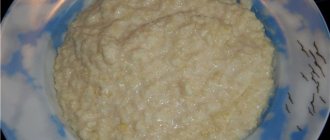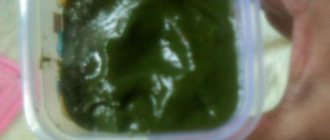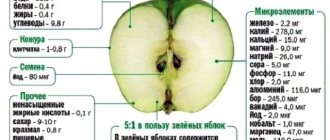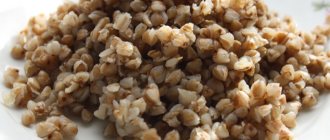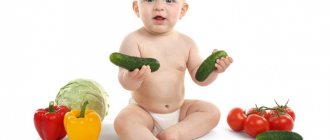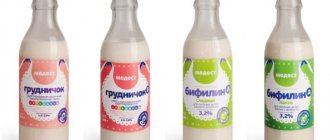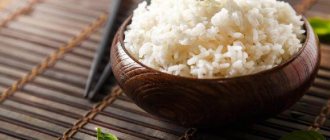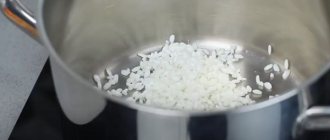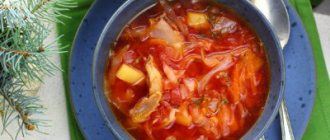When the child turns 5 months old, you can gradually introduce additional complementary foods into his diet in the form of pureed vegetable puree and nutritious cereals. The child’s body requires such supplements, as it begins to grow rapidly at this age.
But what kind of cereals can be given to a child, it’s worth understanding in more detail so as not to cause harm. After all, this question is quite important for caring parents who strive to provide their children with the most valuable nutrients for the full development of the body.
Which cereals to choose for the diet of a 5-month-old baby
Currently, thanks to the huge selection of food products, it is quite difficult to choose exactly those cereals that will be beneficial for the child’s body. You can prepare complementary foods in the form of porridge yourself or purchase a ready-made mixture in the store.
It is worth remembering that the introduction of complementary foods into the diet is an important period, because the gastrointestinal tract of 5-month-old children is just beginning to function normally. Pediatricians advise adding new products gradually and little by little, so as not to cause allergies or rejection.
What is the value of the cereals introduced into the menu?
Of course, complementary foods in different forms will benefit the child. However, it is cereals rich in grains that will have an excellent effect. Since the body is developing rapidly at the age of 5 months, it will need additional energy, and this can only be obtained through a high-calorie menu. Porridges are valued because they contain:
- microelements;
- vitamins;
- carbohydrates;
- proteins;
- fat
The percentage of the above elements that a child simply needs is not the same for different types of cereals, therefore, when preparing new complementary foods for children of 5 months, this indicator must be taken into account. Here are some examples:
- Rice cereal contains 50-70% carbohydrates.
- Oatmeal contains the maximum amount of vitamins B1 and B2.
- Porridges made from buckwheat contain dietary fiber necessary for the child, which helps the intestines function properly.
But dishes prepared with semolina and rice grains contain a minimum amount of valuable dietary fiber necessary for the beneficial functioning of the gastrointestinal tract. Of course, these types can be used for cooking, but not often.
Recipe 5: Buckwheat porridge with milk for children
For children's porridges, it is better to buy unroasted buckwheat (light yellow-green color) - it contains more useful substances. But regular buckwheat will do as well.
Ingredients : buckwheat – ½ cup, water – 1.5 cups, ½ cup milk, 10 g butter, sugar and salt to taste.
Cooking method
Pour water over buckwheat and bring to a boil. Reduce heat and simmer, covering with a lid, until the water boils away, about 15 minutes. Remove from heat, wrap in a towel for 10 minutes to allow the buckwheat to melt. Add milk to the porridge, add salt, sweeten and bring to a boil. Remove from heat, add butter. Serve the porridge warm.
When is the best time to introduce complementary foods to your baby?
If you take into account the advice of pediatricians, the first complementary food in the form of vegetable puree is given to a child at four months of age, and porridge can be introduced into a child’s diet from 5 months. If you cook cereals by adding sugar and butter, you risk causing children to refuse vegetables. After all, any type of vegetable puree will turn out to be bland and tasteless when compared with sugar. In addition, if high-calorie complementary foods are introduced before 5 months, the baby may gain excess weight, especially if there is already a predisposition to this.
Despite the fact that porridge is quite high in calories, for some children this particular complementary food is simply necessary. Early introduction of a new product is recommended for children:
- With low weight.
- Poor growth gains.
- With unstable emptying. That is, if parents observe unstable stools during daily toileting, then the introduction of vegetable complementary foods can only complicate the situation, because such products are a weak natural laxative.
Recipe 4: Corn porridge with milk for children
Porridge for children over one year old. If you cook it for babies, you should first grind the cereal into flour in a coffee grinder or beat the ready-made porridge in a blender. If porridge is being prepared for children over one year old, add butter to the plate and sweeten with jam, sugar or honey.
Ingredients : 3 tbsp. spoons of cereal, 250 ml of water, 100 ml of milk.
Cooking method
Stir 3 tbsp in water. spoons of cereal, boil. Turn the heat to low and cook for 20 minutes. Beat the porridge in a blender (if necessary).
Next, pour milk into the mixture, bring to a boil and cook over low heat for 5-10 minutes. At the end, add a piece of butter, you can add a grated banana.
What cereals should be introduced into the diet of 5-month-old children first?
The first types of cereals should be easy to digest, which means they do not contain gluten, a protein of plant origin. These cereals include:
- barley groats;
- oats and rust;
- porridges made from a wheat base.
Gluten will be quite difficult for a child’s intestines to digest. As a result, children's stool color often changes, allergic reactions appear, and intestinal motility is disrupted, causing contractions (which leads to colic).
You can prepare the first porridge in your life from:
- rice cereal;
- buckwheat base;
- processed corn cereals.
These types of cereals are classified as gluten-free; they are lower in calories and are easily absorbed by the child’s body. If the baby cannot empty his bowels freely after them, then it is advisable to give a 5-month-old child porridge made from buckwheat. If you have unstable stools, you should choose porridges made from rice as complementary foods.
It is best to introduce light complementary foods before the main feeding, which can be either breastfeeding or artificial. They give porridge according to a certain scheme to prevent complications:
- on the 1st day, complementary feeding should be no more than 2 teaspoons;
- on day 2, the porridge intake is increased to 40 grams;
- Over the course of a week, the complementary feeding rate gradually increases to 140 grams.
For children over one year old, the volume of the dish should be equal to 200-220 grams.
Start of complementary feeding
At first, doctors recommend introducing rice or buckwheat porridge into the baby’s diet. They are usually well tolerated by children and do not cause allergies.
The first portions of children's cereals should be 5 percent. To prepare them, take 5 g of cereal per 100 ml of water. The resulting consistency will be optimal for the child’s body.
The child is fed porridge from a small teaspoon. It is better to purchase a soft rubberized spoon at a pharmacy or specialized children's store so that it does not injure delicate gums.
A 5-month-old child is given porridge before the main feeding, after which breast milk or formula is offered.
Each new product must be given in the morning in order to determine how the body will react to it before evening.
Cooking porridge for children 5 months old at home
To prepare a healthy new dish for your child using homemade cereal, you should initially wash it thoroughly under running water. Ready-made porridges from oatmeal, buckwheat, and rice should contain only 10% of the products, while liquid makes up 90% of the total mass. They are cooked over low, almost minimal heat, stirring thoroughly. After the cereal is ready, it must be thoroughly ground. To do this, you will need a special sieve with small cells. The strained mass is transferred to another container and filled with milk. Both regular and expressed breast milk can be used as filling. Next, boil the mass again over low heat for several minutes. At the end of cooking, you can sweeten the porridge with sugar syrup, add a little salt and butter. But don't overdo it with sugar.
The approximate ratio of the necessary ingredients for preparing new complementary foods for a 5-month-old baby:
- to get 100-120 grams of boiled porridge, you should take 10-12 grams of cereal;
- 60 ml of purified water and 120 ml of milk;
- 4 ml sugar syrup;
- 4 grams of butter.
By preparing porridge taking into account these ratios, you can be sure of your children’s excellent appetite. Moreover, there will be no allergic reactions here.
Recipes for cooking porridge for babies
Recipes for cooking porridge for babies
The time of introducing complementary foods is an extremely important moment, both in the life of the baby and the mother. The baby is teething, he begins to sit, grasping movements with his hands appear - all this is a sign of readiness to eat thicker food. In pediatrics, it is customary to introduce vegetables with the first complementary feeding at the age of 4-6 months, and porridge must be the second complementary feeding at 5-7 months. The baby must be taught to eat this healthy and necessary dish for the body. Buckwheat porridge contains a lot of iron, vitamin PP, in addition, buckwheat contains lecithin, a substance that protects liver and brain cells. Millet porridge is rich in potassium and magnesium, it nourishes and protects the heart, oatmeal is rich in phosphorus, which is very beneficial for growing bones. Rice contains starchy carbohydrates, which protect the intestinal mucosa and also cleanse the body of toxins. Rice porridge with pumpkin has truly magical cleansing properties and will be useful for babies with allergic diseases. Semolina porridge is high in calories, but not very healthy, so prepare it for your child occasionally. It is introduced into a child’s diet not as a first complementary food, but after gluten-free cereals such as buckwheat, corn and rice. Carrots are a source of carotene, a growth provitamin. Apples and berries in porridge are an additional source of vitamins, and cottage cheese and meat are a wonderful addition of protein. Any modern mother knows how to cook porridge for a baby; most likely, she will print out a box of ready-made porridge and simply add water. However, in addition to proteins, fats and carbohydrates, there is also the energy of food, which lies in its preparation. The porridge from the box is missing one ingredient - your soul! Try the magical ritual of preparing a dish for your beloved baby, and you will be surprised to notice how he becomes calmer, stronger, more intelligent. He, your little one, together with the porridge, will be charged with the healing energy of his mother’s love. When preparing dishes for children under one year old, there is no need to add sugar and salt. If you do add these products, it is better to use fructose syrup instead of sugar, and salt - saline solution, and in quantities not exceeding those given in the recipes.
How to prepare fructose syrup Boil 50 g of water, add 100 g of fructose (sold in pharmacies) and, stirring, keep on low heat for 10 minutes. If the syrup turns out to be less than 100 g, add more water and boil. The syrup can be stored for 3 days in a tightly closed container. Sugar syrup is prepared in the same way, only instead of fructose, 100 g of granulated sugar is taken. How to prepare a saline solution To prepare a saline solution for porridge , dissolve 2 grams of salt in 1 teaspoon of warm water.
5-6 months
For bottle-fed children from 5 months, and breast-fed children from 6 months, you can prepare the following porridges:
Mashed buckwheat porridge Dry 2 tablespoons of washed buckwheat until light brown in the oven. Boil a glass of water, pour in the cereal and cook over low heat, stirring regularly, for 40-50 minutes. Remove from heat, rub hot through a sieve (do not pour out the cereal broth, combine with pureed cereal) or grind with a blender, add 1 teaspoon of fructose syrup, 1 teaspoon of saline solution, 2/3 cup of raw milk, boil and. stirring constantly, cook over low heat for about five minutes. Place a teaspoon of butter into the cooling porridge.
Puree oatmeal porridge Rinse 2 tablespoons of oatmeal until clear water, pour 1 cup of boiling water and cook over low heat, slightly covering with a lid, stirring frequently, until completely boiled (an hour and a half). While hot, rub through a sieve or grind with a special blender, pour in half a glass of hot milk, 1 teaspoon of fructose syrup, and a teaspoon of saline solution. Mix everything well and heat over low heat for 3-5 minutes. Add 1 tsp. butter.
Semolina porridge recipe No. 1 (5%) Boil 1/2 cup of water, add 2 teaspoons of semolina in a thin stream, stirring constantly, and add salt. Cook over low heat with constant stirring. After 15-20 minutes, add 1/2 cup of hot milk, add 1/2 tsp. fructose syrup, let it boil and remove from heat. Put 1 tsp. butter.
Semolina porridge recipe No. 2 (10%) Boil 1/4 cup of water, add, stirring constantly, in a thin stream, 1 tablespoon of semolina, add 1 tsp. saline solution. Cook over low heat with constant stirring. After 15-20 minutes, add 1 glass of hot milk, add 1 tsp. fructose syrup, let it boil and remove from heat. Put 1 tsp. butter.
Puree rice porridge Boil 1 glass of water, add 2 g of salt, add 1.5 tablespoons of washed rice and cook until tender. Then rub through a sieve or grind with a blender, pour in 1/2 cup of hot milk, 1 teaspoon of fructose and cook, stirring, for another 5 minutes. Remove from heat, add 1 teaspoon butter. Remember, all cereals should be introduced gradually, starting with 1 teaspoon, in the morning.
6 months
From 6 months for artificial children and from 6.5 months for natural children:
Semolina porridge in vegetable broth: 1 carrot and 1 potato should be thoroughly washed, peeled, chopped and cooked in 2 glasses of water, over low heat, covered, until tender. Strain the broth, put it back on the fire, when it boils, add 1 tablespoon of semolina in a stream, stirring constantly, add salt or 1 tsp. saline solution and cook for another 15-20 minutes. Remove from heat and add 1 tsp. butter.
Semolina porridge with carrot juice Boil 2 glasses of milk, stirring it constantly, add 3 teaspoons of semolina in a thin stream and cook for 15-20 minutes. Wash 1 carrot well, peel, scald with boiling water and grate on a fine grater. Squeeze the juice from the carrot puree and pour into the prepared porridge, add 2 tsp. fructose syrup and salt. Remove from heat, add 1 tbsp. l. butter.
Semolina porridge with apple or berry puree Boil 1.5 cups of milk, add 1.5 tablespoons of semolina in a thin stream, stirring constantly, add salt and cook for 15-20 minutes. Wash 1 apple thoroughly, remove peel and seeds, grate on a fine grater (or wash 0.5 cups of berries and rub through a sieve). Combine the puree with semolina porridge, add 1 tsp. fructose, remove from heat and add 2 tsp. butter.
Two-component porridge made from buckwheat and rice flour. Add 2 teaspoons of rice and buckwheat flour to 1/4 cup of warm milk and stir thoroughly. Pour 1/2 cup of milk and 1/4 cup of water into a separate saucepan, add 1 teaspoon of saline solution and 2 teaspoons of fructose syrup. Put on fire. When it boils, reduce and pour in, stirring the milk with the diluted flour. Cook over low heat, stirring constantly for 5 minutes. Then remove from heat, add 1 teaspoon of butter.
Rice porridge with pumpkin Boil 1 glass of water. Grate 100 g of pumpkin, add to water and cook until half cooked. Add 2 tablespoons of washed rice, add 2 cups of hot milk and cook until done. Remove from heat, rub through a sieve or grind with a blender, add 2 teaspoons of fructose syrup, salt, and boil. Season with 1 teaspoon butter.
7 months
From 7 months you can add the following cereals:
Semolina porridge with chicken broth Boil unsalted broth from 100g of lean chicken meat, strain. Take 1.5 cups of prepared broth, boil, add salt and add 1 tablespoon of semolina in a thin stream, stirring constantly. Cook over low heat, stirring, for 15-20 minutes. Remove from heat, season with 1/2 teaspoon butter.
Mashed millet porridge Carefully sort out 2 tablespoons of cereal, sorted and washed to clean water, rinse and pour into 200g of boiling water. Add 1 tablespoon of brine and cook, stirring frequently, over low heat for 1 hour. Rub the hot porridge through a sieve or grind in a blender. Add 150 g of hot milk, 2 teaspoons of fructose syrup and heat over low heat for 3-4 minutes. Take off. Season with 1 teaspoon butter.
8 months For a child from 8 months of age you can prepare:
Rice porridge with cottage cheese : Boil 2 tablespoons of washed rice in 1.5 cups of water until tender. Rub through a sieve or grind with a blender. Add 50 g of cottage cheese, 2 teaspoons of fructose, 2 teaspoons of butter and mix well.
Rice porridge with meat Piece of beef, 100g, cut into 4 parts, add 3 glasses of water and cook until tender, strain. Add strained broth with hot water to a volume of 2 glasses, add 2 tablespoons of washed rice and cook until tender. Pass the meat through a meat grinder twice or grind it in a blender, rub the rice through a sieve or also use a blender. Combine the minced meat with rice, boil for 5 minutes over low heat, stirring constantly, add salt and remove. Season with 1/2 teaspoon butter.
Basic tips for introducing new foods
Pediatricians advise following certain recommendations when introducing complementary foods to a child who is 5 months old:
- the basis of the porridge should be cereals, which are less likely to cause allergies;
- you can give the next new dish only a week after introducing the first dish;
- if, when introducing a new product, any rash is detected on the skin, the porridge should be discontinued and immediately consult a doctor for examination;
- It is not allowed to introduce complementary foods if the child is unwell, during vaccinations, or in the heat;
- It is best to introduce new cereals before breastfeeding, in this case the child will react positively to the new product;
- It is recommended to feed a new dish using a teaspoon; you should not use a baby bottle with a pacifier for this purpose.
By adhering to the above tips, the introduction of porridge into the menu will be successful and beneficial for the body, and no allergic reactions will be detected in children.
